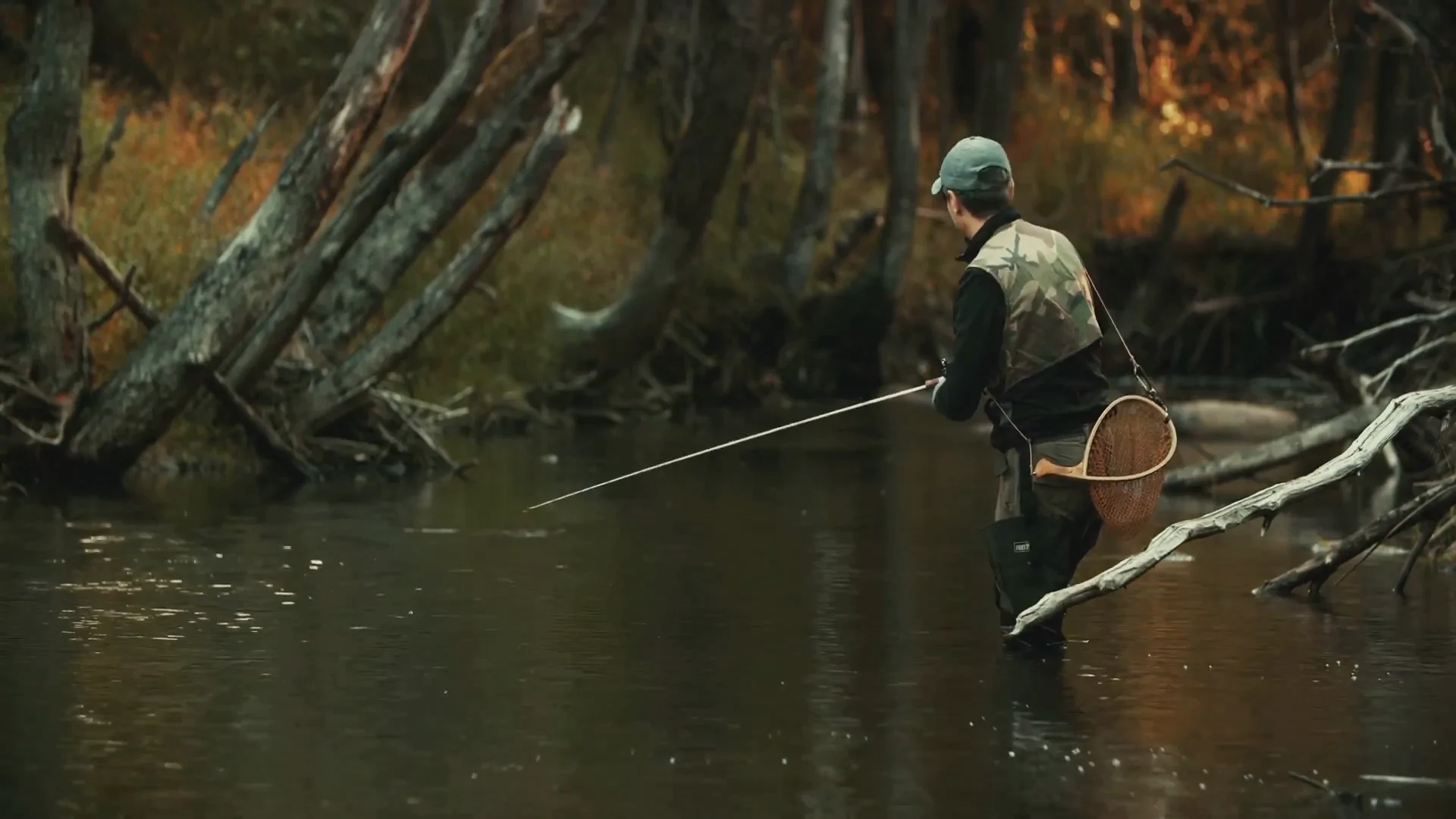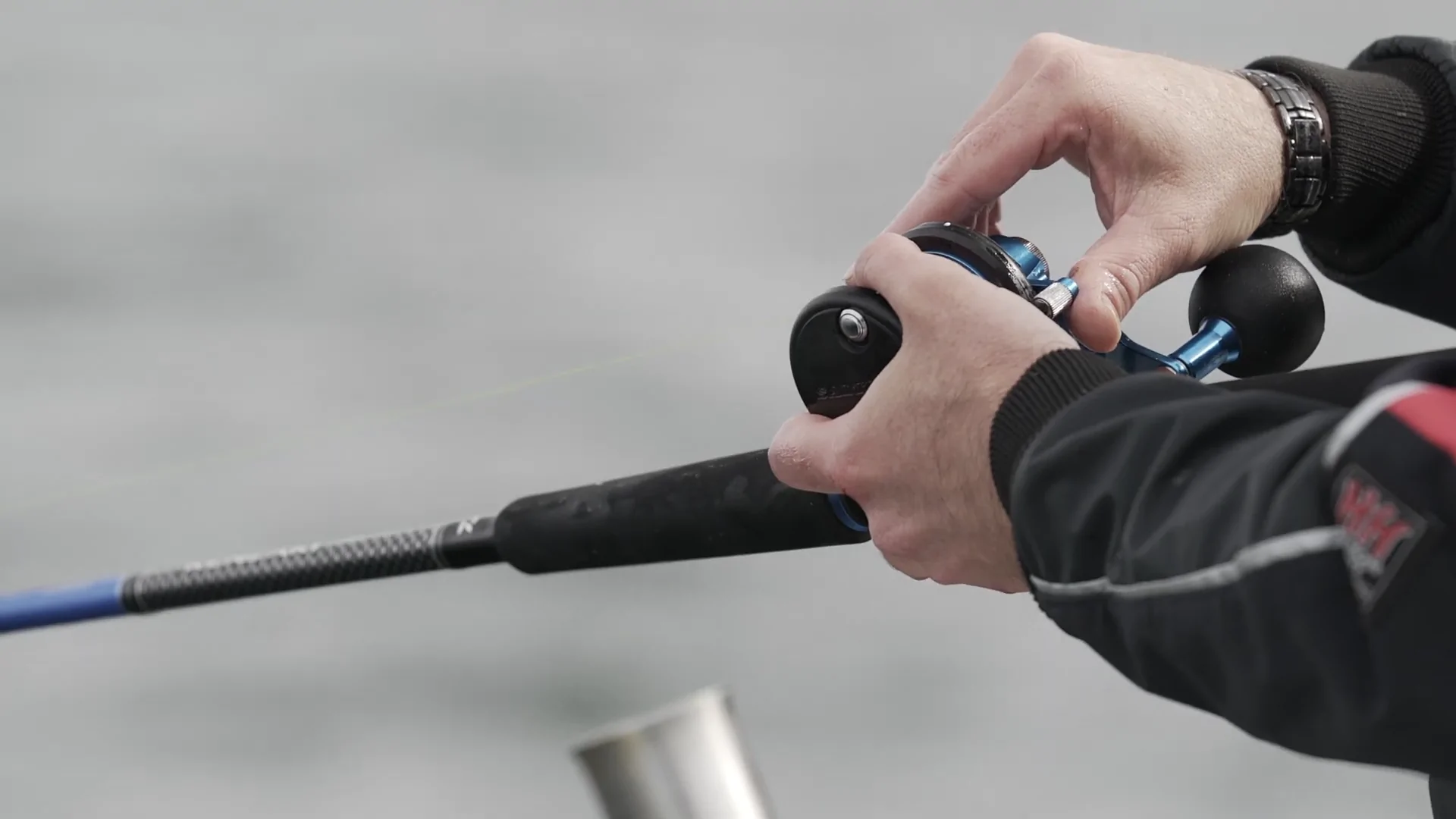
Share Post:
Starting out on a calm, scenic lake often brings a sense of peace and anticipation. Catching that first fish can feel like a small miracle, and having the right gear makes all the difference.
With that said, I prepared a helpful guide for beginners eager to head lakeside and try something new. Let’s get right into it.
Table of Contents
Toggle1. A Beginner-Friendly Rod and Reel Combo
Picture a setup that feels comfortable right from the start: a medium-action spinning or fly rod paired with a user-friendly reel. An arrangement like that helps someone new to fishing handle a variety of common freshwater species.
Imagine hooking a feisty bass one afternoon and a panfish the next morning, all thanks to a setup that feels natural in hand. Keep it simple at first.
Over time, personal preferences will shape upgrades, but initially, a basic rod and reel combo is golden.
2. A Small First Aid Kit

Accidents happen, even in a calm lake setting. A simple kit with bandages, antiseptic wipes, tweezers, and pain relief medication can mean the difference between continuing a fishing session or heading home early.
Catching a fish might be the goal, but caring for personal well-being sits at a higher priority. Pack one and hope it never needs to be opened, but feel grateful it’s there if something goes wrong.
A boo boo kit is a handy, compact version of a first aid kit designed to handle minor injuries while fishing or enjoying the outdoors. When going fishing, something small but useful such as this can really mean a lot.
3. Quality Fishing Line
Nothing beats a reliable fishing line when first learning to cast. A monofilament line—somewhere between 6 to 12 pounds in strength—works well in most lake conditions.
It’s strong enough to handle a decent catch but still light enough to avoid feeling like wrestling with a steel cable. Consider bringing extra line, too.
Beginners often grapple with tangles early on, and it’s comforting to know more line waits in the tackle box if needed.
4. Hooks That Match Your Target Species
No angler wants to fumble with gear that’s either too large or too small. A selection of single barbless hooks sized around 6 to 10 handles a variety of common lake dwellers.
Those smaller hooks slip out easily and cause less harm to the catch. For someone aiming to release fish back into the water safe and sound, that gentler approach feels good.
Hooks sit at the heart of any rig, so give them proper attention.
5. Live Bait and Artificial Lures

Bait often sets the tone for the day’s fishing adventure. Live worms wriggling enticingly, tiny minnows shimmering beneath the surface, or even a small grasshopper can bring fish running.
On the other hand, artificial lures offer incredible variety. Consider items like soft plastic worms, colorful spinners, or small crankbaits.
Experimentation can lead to unexpected successes, and switching between live bait and lures can keep the experience fresh.
Useful Options
- Live Bait: Worms, minnows, insects
- Artificial Lures: Soft plastic grubs, spinners, crankbaits
6. A Reliable Bobber
A bobber, often a simple plastic float, helps keep the bait at a perfect depth. Watching a bobber wiggle or suddenly dip below the surface brings excitement.
That subtle signal sparks hope: a fish might be nibbling at the end of the line. Without even feeling a tug, a bobber provides a visual clue. Beginners often rely on that colorful friend as a valuable fishing partner.
7. A Variety of Sinkers
Sometimes a baited hook needs a bit of extra help reaching a spot just under the surface or hugging the lake bottom. Sinkers, often small weights, handle that job.
Split shot sinkers in different sizes allow quick adjustments to match changing conditions. Just clip one on or remove one to find that sweet spot where fish gather.
8. An Organized Tackle Box
Imagine having all gear easily accessible, neatly compartmentalized, and protected from the elements. A well-structured tackle box provides that comfort.
Hooks, sinkers, lures, extra line—everything sits in its place, waiting to be called into action.
Beginners can look forward to developing a rhythm: grab the box, pick out what’s needed, and get back to fishing without losing time rummaging through a messy bag.
9. A Pair of Needle-Nose Pliers
Fish have a way of swallowing hooks deeper than expected, and no one wants to harm them while trying to remove the hook. Needle-nose pliers work wonders in those moments, allowing a gentle extraction with minimal fuss.
They’re also handy for crimping sinkers or trimming line. Even a beginner quickly learns the value of a simple pair of pliers.
10. A Good Landing Net
Picture finally reeling in a decent catch, only to see it slip off at the edge of the boat. That can feel disheartening. A landing net helps secure a fish at the very last moment, preventing it from making an unexpected escape.
A rubberized net proves gentler on the catch, too. Those who release their fish later find comfort in knowing minimal harm was done.
11. A Valid Fishing License
No one wants to start out on an exciting new hobby by breaking the rules. A valid license ensures staying on the right side of regulations.
Pick one up online or at a local sporting goods store. It’s usually quick, straightforward, and contributes to fishery management, meaning future generations can enjoy lake fishing just as much.
12. Appropriate Clothing
Lake weather can surprise even experienced anglers. Consider breathable, moisture-wicking shirts for hot, sunny afternoons and a warm, layered approach for cooler mornings.
A sturdy hat offers sun protection, and polarized sunglasses reduce glare, allowing a better look beneath the water’s surface. Dressing smartly often boosts comfort, leading to more time focusing on the fishing and less time feeling chilly or overheated.
13. Sunscreen and Insect Repellent
No one wants to come home from a relaxing day on the lake looking like a lobster and scratching itchy bites.
High-SPF sunscreen protects skin from harsh UV rays, and insect repellent wards off buzzing mosquitoes. A few minutes spent applying these protective measures can lead to hours of calm on the water, free from sunburn and constant swatting.
14. A Local Regulations Guide
Each region has unique rules about catch limits, size restrictions, and protected species. Having a small guide or a quick reference bookmarked on a smartphone helps an angler stay informed and responsible.
It shows respect for the environment and preserves the resource for others. Knowledgeable anglers develop a sense of stewardship, appreciating that a well-managed fishery creates lasting enjoyment for everyone.
It’s going to be a beautiful weekend in Illinois, so for those who love the early opportunity to go trout fishing, we have 9 areas stocked for the Fall Catch-and-Release Fishing Season. Reminder: no trout can be kept during the catch-and-release period. https://t.co/LlpfkS1CR7 pic.twitter.com/OgxAOcUtxD
— I Fish Illinois (@IFishIllinois) September 30, 2022
15. A Handy Multi-Tool or Pocket Knife
Adapting on the fly often defines fishing adventures. Maybe a knot needs trimming, or a piece of bait needs cutting.
A small multi-tool or knife brings versatility. That item quickly becomes a go-to gadget, never leaving a tackle box once it proves its worth.
16. A Cooler or Stringer for the Catch
Some anglers prefer the taste of a fresh fish dinner, others practice catch-and-release exclusively. For those who choose to keep a few, a cooler with ice keeps the catch fresh.
A stringer allows the fish to remain alive in the water until it’s time to head home, maintaining flavor and quality. Proper storage treats the harvest with respect.
17. Hat and Polarized Sunglasses

A wide-brimmed hat blocks harsh midday sun, reducing the risk of dehydration and sunburn. Add a pair of polarized sunglasses, and suddenly underwater features become clearer.
Spotting fish near submerged logs or along weedy shorelines becomes easier. This combination improves comfort and effectiveness at once.
18. Snacks and Plenty of Water
Fishing often involves patience and waiting. The body needs fuel during those hours.
Packing nutritious snacks like granola bars or fresh fruit and carrying enough water prevents feeling sluggish. Hydration keeps energy levels steady, ensuring full enjoyment, even during lulls in the action.
19. A Camera or Protected Smartphone
Memories matter. That first catch or a scenic sunrise over still waters often begs to be shared.
A camera or a smartphone equipped with a waterproof case ensures priceless moments get preserved. Years down the line, those images rekindle the thrill of that special day at the lake.
20. Patience and Curiosity

All the gear in the world can’t replace a calm, patient mindset. Moments without bites provide valuable time to learn subtle aspects of the lake’s personality. Watch for small ripples, darting shadows beneath the surface, and shifting patterns in the breeze.
Allow curiosity to guide adjustments in technique. Patience often turns a quiet outing into one filled with personal growth and discovery.
Final Thoughts
The essentials listed above create a stable foundation for anyone looking to spend time on the water. A rod and reel may hook that first catch, but the attitude and approach turn the experience into a lifelong pastime.
Keep gear ready, keep a watchful eye on the surface, and enjoy the gentle pace of fishing along a peaceful lake.
That’s all it takes to start making memories. Good luck out there, and savor the journey.
Related Posts:










